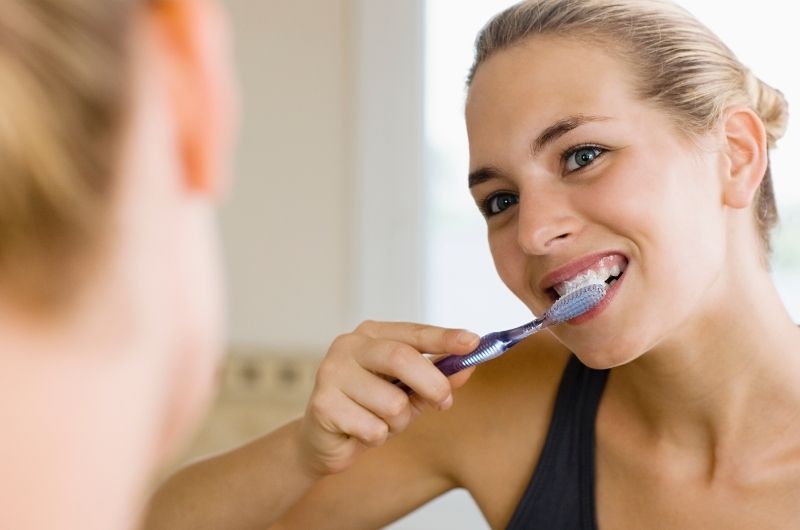The Truth About the Golden Hour
As children, we’re taught to brush our teeth twice a day and floss once a day, but there’s often confusion about the timing of flossing. Should you floss before or after brushing? And how long should you wait to floss after eating?

Image: workoutwalls.blogspot.com
The answer to the second question is actually quite simple: you should floss immediately after eating. However, let’s dive into the depths of this topic and explore the reasons why.
Food Enemies: The Role of Bacteria
After we eat, food particles stick to our teeth and gums. These particles are a feast for the bacteria that live in our mouths. These bacteria produce acids that attack our teeth, leading to cavities and gum disease.
Flossing removes food particles and plaque from between your teeth, where your toothbrush can’t reach. By flossing immediately after eating, you can help to prevent these bacteria from causing damage.
Acid Alert: The Best Time to Floss
It’s important to note that waiting an hour or more to floss after eating can actually be counterproductive. The acids produced by bacteria start to attack your teeth within minutes of eating. If you don’t floss right away, these acids will have more time to do damage.
So, the best time to floss is immediately after eating. By doing so, you can help to neutralize these acids and protect your teeth and gums.
The Myth of Weakening Enamel
Some people believe that flossing immediately after eating can damage your teeth by weakening the enamel. This is a myth. In fact, flossing actually helps to strengthen your enamel by removing plaque and food particles.
Enamel is the hard outer layer of your teeth. It’s made of a mineral called hydroxyapatite, which is very strong. However, hydroxyapatite can be weakened by acids. The acids produced by bacteria in your mouth can dissolve hydroxyapatite, leading to cavities.
Flossing helps to remove these acids and plaque from your teeth. This helps to protect your enamel and keep your teeth strong.

Image: theheartandbrain.com
Benefits Beyond the Mouth
In addition to protecting your teeth and gums, flossing immediately after eating can also have other benefits. For example, it can help to:
- Freshen your breath
- Reduce your risk of heart disease
- Improve your overall health
So, there you have it. The next time you finish eating, reach for your floss and give your teeth a good cleaning. It’s the best way to protect your teeth and gums from the harmful effects of food particles and bacteria.
Flossing Best Practices
Here are a few tips for effective flossing:
- Use a fresh piece of floss each time you floss.
- Gently slide the floss between your teeth and gums.
- Curve the floss around the surface of each tooth and move it up and down to remove plaque and food particles.
- Floss for about 30 seconds to ensure that you remove all the plaque and food particles.
Flossing is an important part of a healthy oral hygiene routine. By following these tips and flossing immediately after eating, you can help to keep your teeth and gums healthy for life.
How Long Should You Wait To Floss After Eating
Conclusion
Flossing immediately after eating is the best way to protect your teeth and gums from the harmful effects of food particles and bacteria. By following these simple steps, you can help to ensure a healthy smile for years to come. So next time you finish a meal, don’t forget to floss – your teeth will thank you for it!